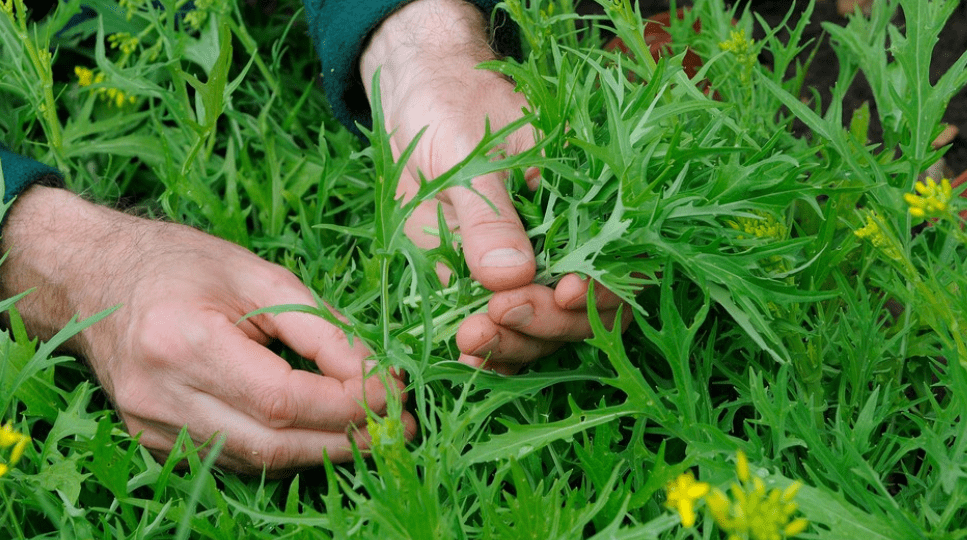
How to Grow and Care for Mizuna Greens at Home
Are you tired of buying expensive, wilted greens from the grocery store? Why not grow your own fresh, delicious Mizuna greens right at home? In this post, we’ll give you all the tips and tricks you need to successfully grow and care for Mizuna greens in your own home. From planting and watering to harvesting and cooking, we’ve got you covered. Say goodbye to store-bought greens and hello to fresh, homegrown Mizuna greens that will elevate your meals to a whole new level. Get ready to enjoy the satisfaction of growing your own food and the incredible taste of freshly harvested greens. Let’s get started!
Table of Contents
ToggleUnderstanding Mizuna Greens
A. Description and Characteristics
Mizuna greens, also known as Japanese mustard greens, have been a staple in Asian cuisine for centuries and are now gaining popularity in the Western world. These leafy greens have a mild, peppery flavor and a delicate, feathery texture that can add a unique dimension to your dishes. Mizuna greens are not only delicious but also packed with nutrients, making them a valuable addition to any diet.
B. Nutritional Benefits
Mizuna greens are rich in vitamins A, C, and K, as well as folate, iron, and fiber. These nutrients are essential for maintaining a healthy immune system, promoting bone health, and supporting overall well-being. By incorporating Japanese greens into your diet, you can ensure that you are fueling your body with the essential nutrients it needs to thrive.

Preparing to Grow Mizuna Greens
A. Choosing the Right Variety
Mizuna greens come in several varieties, but all of them offer the same delicious flavor and health benefits. When choosing the right variety for your garden, consider factors such as climate, soil type, and growing conditions. Look for a variety that is well-suited to your specific environment to ensure the best results.
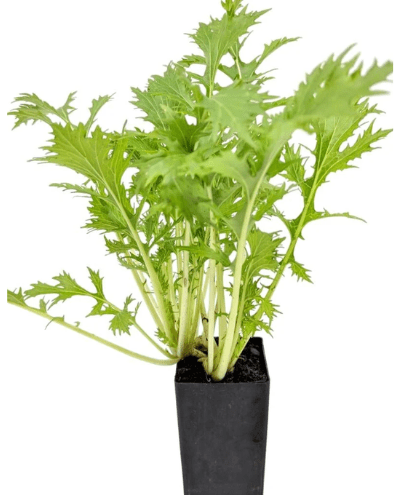
B. Ideal Growing Conditions
To grow Mizuna greens successfully, it is crucial to provide the ideal growing conditions. This includes a sunny location with well-drained soil and consistent moisture. Japanese greens thrive in cooler temperatures, making them the perfect addition to your early spring or fall garden. By creating the ideal environment for these nutrient-packed greens, you can ensure a bountiful harvest and maximum nutritional benefits for you and your family.
Planting Mizuna Greens
A. Sowing Seeds
When it comes to planting Mizuna greens, sowing seeds is the way to go. This method allows for a steady and continuous supply of fresh greens throughout the growing season. By sowing seeds directly into the soil, you can ensure that the plants establish strong roots and grow vigorously. This will result in a plentiful and long-lasting harvest for you to enjoy. With proper care and attention, sowing Mizuna green seeds can lead to a successful and rewarding gardening experience. So why wait? Get sowing and start reaping the benefits of these delicious and nutritious greens in no time.
1. Best time to plant and spacing requirements
The best time to plant Japanese greens is in the early spring or fall when the temperatures are cooler. As for spacing, make sure to sow the seeds about 1/4 inch deep and 3-4 inches apart to allow for proper growth and development. This will give the plants enough space to thrive and produce an abundance of fresh greens for you to enjoy. So, don’t wait any longer, get those seeds in the ground and start reaping the benefits of a bountiful harvest. Happy sowing!
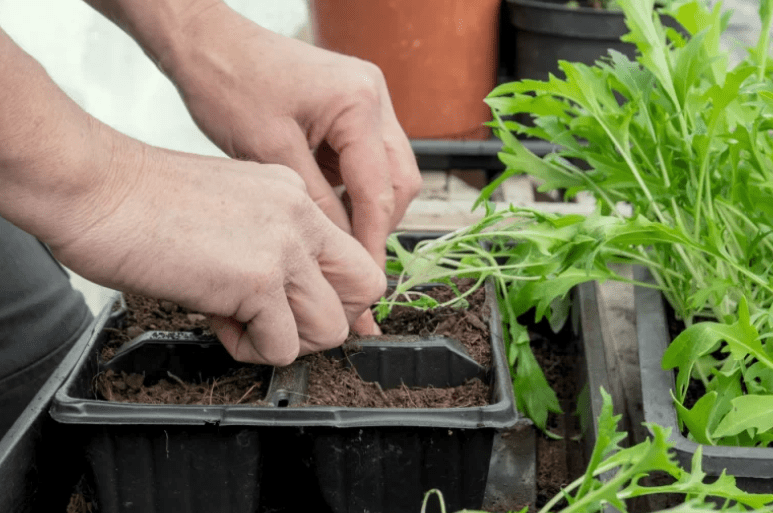
2. Soil and watering needs
Oriental greens thrive in well-draining, fertile soil with a pH level of 6.5-7.0. Make sure to water the plants regularly, keeping the soil consistently moist but not waterlogged. This will ensure that your Mizuna greens grow strong and healthy, providing you with an abundance of nutritious and delicious leaves to enjoy. So, get sowing and start reaping the benefits of these delectable greens in no time. You won’t regret it! Happy gardening!
B. Transplanting Seedlings
Now is the perfect time to transplant your seedlings into the garden and start reaping the rewards of your hard work. Make sure to space them about 12-18 inches apart to give them plenty of room to spread out and grow. With the right care and attention, you’ll have a steady supply of delicious and nutritious greens in no time. So, what are you waiting for? Get those seedlings in the ground and watch them flourish into a bountiful harvest. It’s time to reap what you sow!
Caring for Mizuna Greens
A. Watering
Mizuna greens need regular watering to thrive and produce tasty, crisp leaves. Make sure to water them consistently, keeping the soil evenly moist but not waterlogged. Don’t let the soil dry out completely, as this can cause the leaves to become bitter and tough. So grab that watering can and give those greens the hydration they need to thrive and provide you with a delicious and healthy addition to your meals. Don’t let your mizuna greens go thirsty – they deserve the best care to flourish and provide you with an abundance of nutritious greens.
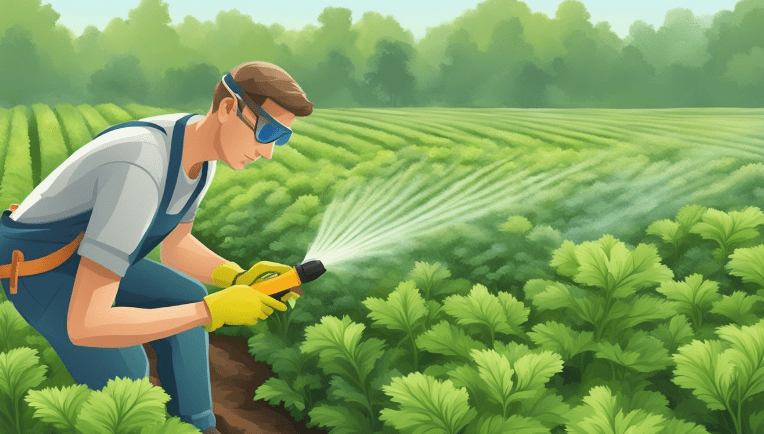
B. Fertilizing
Fertilizing your Oriental greens is essential to ensure they have the nutrients they need to grow and flourish. Choose a balanced, organic fertilizer and apply it according to the instructions on the packaging. By providing your greens with the necessary nutrients, you will help them produce larger, more flavorful leaves that will add a delicious and nutritious element to your meals. So grab that bag of fertilizer and give your Oriental greens the boost they need to thrive and provide you with an abundance of tasty and healthy greens. Don’t skimp on the fertilizer – your Mizuna greens deserve the best care to flourish and provide you with a bountiful harvest.
C. Mulching
Mulching your garden is an absolute must if you want to ensure the health and vitality of your plants. Not only does mulch help to retain moisture in the soil, reducing the need for frequent watering, but it also helps to suppress weeds and regulate soil temperature. Additionally, as the mulch breaks down, it adds valuable nutrients to the soil, creating a healthier environment for your plants to thrive. Don’t let your garden go without this essential nutrient-rich layer – mulch is the secret ingredient to a thriving and bountiful garden. So grab your mulch and give your garden the TLC it deserves. Your plants will thank you with lush, healthy growth and an abundance of beautiful blooms. A little mulch goes a long way in creating a flourishing and low-maintenance garden, so don’t hesitate to get started.
Pest and Disease Management
A. Common Pests
1. Identifying and controlling pests like aphids, flea beetles, and slugs
Don’t let those pesky pests ruin all of your hard work in the garden. By identifying and controlling common pests like aphids, flea beetles, and slugs, you can protect your plants and ensure a thriving garden. Don’t let these tiny invaders wreak havoc on your precious plants – take control and show those pests who’s boss. With a little bit of proactive pest management, you can keep your garden healthy and thriving all season long. So don’t wait until it’s too late – take the necessary steps to protect your plants and keep your garden looking beautiful. Your plants will thank you for it!
B. Diseases
1. Common diseases affecting mizuna greens and their prevention
Don’t let diseases take over your Oriental greensand jeopardize your harvest. By being aware of common diseases and taking preventative measures, you can ensure the health and vitality of your crop. Keep an eye out for signs of diseases such as downy mildew and powdery mildew, and take proactive steps to protect your plants. Implementing proper spacing, good air circulation, and regular inspection can help prevent the spread of diseases. Don’t let these pesky diseases get the best of your mizuna greens – take action now to keep your plants healthy and productive. Your efforts will pay off with a bountiful and disease-free harvest.
C. Organic Pest Control Methods
Organic Pest Control Methods such as using neem oil, insecticidal soap, or natural predators can also help prevent diseases by controlling pests that can spread infections. Avoid overcrowding and overwatering, as these conditions can promote the growth of diseases. By taking these preventative measures, you can ensure that your mizuna greens stay healthy and disease-free, allowing you to enjoy the fruits of your labor and savor the delicious flavors of your harvest. Don’t let diseases ruin your gardening experience – take action now to protect your mizuna greens and enjoy a thriving crop.

Harvesting Mizuna Greens
A. When to Harvest
Harvest your mizuna greens at the peak of their flavor and freshness to truly reap the rewards of your hard work. Waiting too long may result in bitter or tough leaves, so be sure to keep a close eye on their growth and harvest them when they are tender and full of flavor. By doing so, you’ll be able to enjoy the full, bountiful harvest that you deserve. Don’t miss out on the delicious taste of your mizuna greens – harvest them at just the right time for the best results.
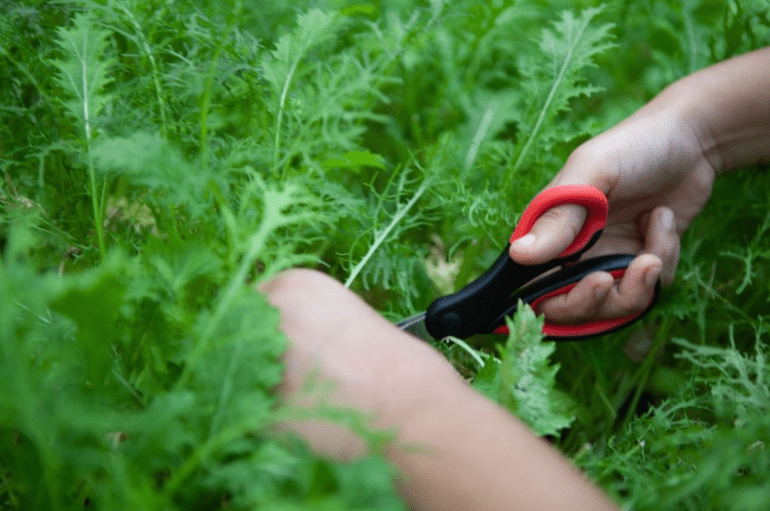
B. Post-Harvest Handling
After harvesting your mizuna greens, it’s important to handle them with care to ensure they remain fresh and flavorful. Immediately after harvesting, gently clean the leaves and remove any damaged or wilted parts. Then, store them in a sealed container or plastic bag with a paper towel to absorb any excess moisture. This will help keep the greens crisp and fresh for longer, allowing you to enjoy them in salads, stir-fries, or as a delicious side dish.
Taking the time to properly handle your mizuna greens after harvesting will ensure that you get the most out of your crop. Don’t let all your hard work go to waste – take care of your greens and savor every bite. Your taste buds will thank you!
Using Mizuna Greens in the Kitchen
A. Culinary Uses
Mizuna greens are a delicious and versatile addition to any kitchen. By following the proper handling and storage techniques, you can ensure that your Japanese greens stay fresh and crisp, ready to elevate any dish you choose to incorporate them into.
Whether you enjoy them in a refreshing salad, a flavorful stir-fry, or as a delightful side dish, mizuna greens offer a unique and delectable taste that will enhance any meal. By taking the extra step to care for your greens after harvesting, you are ensuring that you get the most out of your crop and can fully enjoy the fruits of your labor.
So, don’t let your hard work go to waste. Take the time to properly handle and store your mizuna greens, and your taste buds will certainly thank you. Incorporate these vibrant and flavorful greens into your cooking, and enjoy the fresh, crisp, and delicious results. Trust me, you won’t regret it!

B. Storage and Preservation
Storage and Preservation of your mizuna greens is key to maximizing their flavor and texture. Don’t let your efforts in the garden go to waste – take the extra care to store your greens properly. Whether you choose to refrigerate, freeze, or preserve them, the reward of having fresh, vibrant mizuna greens at your fingertips will be well worth the effort. So, go ahead and give your meals a flavor boost with these delightful greens. Your taste buds will thank you!
Troubleshooting Common Issues
A. Growth Problems
It’s important to address any growth problems in your mizuna greens as soon as they arise. Don’t let issues like poor soil quality, inadequate sunlight, or overwatering stand in the way of your success. Take the time to troubleshoot and address these problems to ensure that your mizuna greens thrive and flourish. With a little bit of extra attention and care, you can overcome these obstacles and enjoy a bountiful harvest of delicious, nutrient-packed greens. Don’t let anything hold you back from growing the best mizuna greens possible!
B. Environmental Stress
When it comes to environmental stress, it’s crucial to take action and address the issue head-on. Don’t let factors like extreme temperatures, pests, or diseases wreak havoc on your mizuna greens. Instead, be proactive and implement solutions to combat these challenges. By providing proper protection, managing pests, and creating a conducive growing environment, you can ensure that your mizuna greens thrive even in the face of environmental stress. Don’t let these issues deter you from achieving success with your greens. Take control and show them who’s boss!
Seasonal Care Tips
A. Spring and Summer Care
In the spring and summer, it’s important to provide your mizuna greens with the proper care and attention to ensure they thrive in the warmer weather. Make sure to keep the soil moist, but not waterlogged, and provide plenty of sunshine for optimal growth. Regularly monitor for signs of pests and diseases, and take proactive measures to address any issues that arise. Additionally, consider using shade cloth to protect your greens from the intense summer sun. By implementing these seasonal care tips, you can ensure that your mizuna greens continue to flourish throughout the spring and summer months. Don’t let the changing seasons hinder your gardening success, take action and give your greens the care they need to thrive!
B. Fall and Winter Care
In the fall and winter, it’s crucial to give your mizuna greens the proper care and attention to ensure they survive and thrive in the cooler weather. Make sure to provide sufficient protection from frost and cold temperatures by using row covers or cold frames. Keep an eye on soil moisture levels, as the cooler weather may require less frequent watering. Additionally, consider adding mulch to insulate the soil and provide extra warmth for your greens. Regularly monitor for signs of pests and diseases, and take proactive measures to address any issues that arise. By implementing these seasonal care tips, you can ensure that your mizuna greens continue to thrive even in the fall and winter months. Don’t let the changing seasons hinder your gardening success, take action and give your greens the care they need to survive and thrive!
In conclusion, growing and caring for Mizuna greens at home is not only a rewarding experience, but it also provides you with a fresh and healthy addition to your meals. By following the simple steps and tips outlined in this post, you can enjoy a continuous supply of delicious, homegrown greens right in your own kitchen. So why not give it a try and start reaping the benefits of growing your own Mizuna greens today? Happy planting!
Frequently Asked Questions (FAQs)
Mizuna greens are a leafy green vegetable that is commonly used in salads and stir-fries. They have a mild, peppery flavor and are packed with nutrients.
Mizuna greens are relatively easy to grow at home. You can start by planting the seeds in well-drained soil and keeping them watered. They thrive in cooler temperatures, so they are perfect for growing in the spring and fall.
Not at all! Mizuna greens are low-maintenance and don’t require a lot of attention. Just make sure to water them regularly and keep an eye out for any pests or diseases.
Mizuna greens typically take about 3-4 weeks to reach maturity. You can start harvesting the outer leaves once the plant is about 6 inches tall.
Absolutely! Mizuna greens are a great source of vitamins A, C, and K, as well as folate and fiber. They are also low in calories, making them a healthy addition to your diet.
Yes, you can definitely grow Mizuna greens indoors as long as they have access to plenty of sunlight. A sunny windowsill or a grow light can provide the necessary light for them to thrive.
When harvesting Mizuna greens, you can simply snip off the outer leaves with a pair of scissors, leaving the inner leaves to continue growing. This allows for a continuous harvest throughout the growing season.
Make sure to keep the soil consistently moist but not waterlogged. Also, consider using a balanced fertilizer to help promote healthy growth. With a little care and attention, you can enjoy fresh, homegrown Mizuna greens in no time!
